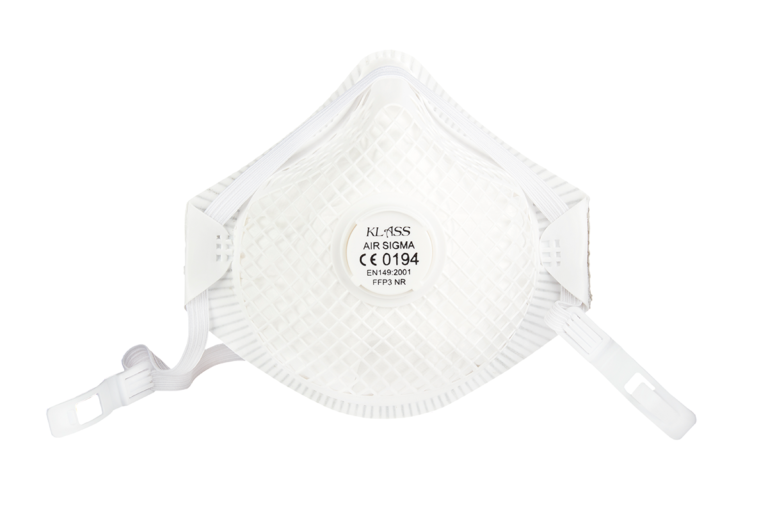Safety Standards for Respiratory Protection
RPE stands for Respiratory protective equipment and there are two types of RPE.
- Self-contained respirators
- ‘Filtering Face Piece’ masks. (FFP) Subdivided into; FFP1, FFP2 and FFP3 masks.
The certification for FFP masks are EN 149:2001+A1:2009 for (Applicable in the UK & Europe) as well as UKCA (Applicable in the UK.)
FFP3 masks filter at least 99% of ambient air, thus offering the highest level of protection. Microlin design and manufacture high quality FFP masks which protect against particles such as dusts and aerosols.
FFP3 masks are used when handling heavy metals, hardwood, brake dust, radioactive substances, pathogens such as viruses, bacteria and fungal spores as well as stainless steel welding.
Many industries use FFP masks. These include; food, manufacturing, agriculture, construction, pharmaceuticals, health, chemical, raw materials and more.
It is becoming clear that most users prefer FFP3 masks as this offers the highest level of protection. It protects the wearer by ensuring they only breathe in one twentieth of the amount of dust in the air. However, the biggest mistake we see is improper use of FFP3 masks.
Simply wearing any FFP3 mask will not protect you. Once you have found an FFP3 mask you must be face fit tested with it.
Fit testing is a method for checking that a specific model and size of tight-fitting face piece matches the wearer’s facial features and seals adequately to the wearer’s face. It will also help to identify unsuitable face pieces which should not be used.
Essentially, a face fit test tells you if the mask you are wearing is protecting you. We recommend using a ‘FIT2FIT’ accredited professional face fit tester to conduct the test for you. If you need more information regarding face fit testing we can help.
FFP masks are made using special fabrics which all serve a purpose. The key fabric is the protective filter which works by stopping any particles being inhaled.
Our mask filter is a special Melt blown filter which is a high efficiency particulate air (HEPA) filter and is used for PPE face masks and respirators. This unique fabric blocks 99% of particles which are 0.3 microns or larger. More over melt blown fabric holds electrostatic charge for enhanced sub-micron particle filtration.
A key advantage of Microlin Cooper Klass masks compared to others in the market is the quality of the high filtration melt blown layer.
Our melt blown has been designed to pass the FFP3 standard with fewer amount of layers needed than other masks compared to the market.
For example, some masks may use 3-4 layers of the melt blown fabric along with other material layers to achieve the same result as our mask!
This means the mask is thinner thus it is easier to breathe and more comfortable to wear.
Failing to wear proper RPE in a toxic environment can be fatal. Over time exposure to dangerous particles can damage the body’s respiratory system leading to serious illness or death.
The following points are to be met by certified FFP1, FFP2 and FFP3 respirators:
- The following information is printed on the product: the CE mark with the four-digit identification number of the certification body, the FFP protection level, the EN standard, the manufacturer’s name and the product number.
- The product packaging contains a declaration of conformity by the manufacturer or a link to a corresponding online version.
- The manufacturer can present an EU or UKCA type examination certificate on request.
We hope this answers some questions you may have regarding RPE – if you have further questions please get in contact with one of our RPE experts at Microlin.
“D” mark This mark indicates that the mask has met an additional requirement of EN149: the dolomite dust clogging test. This test determines whether the mask still has good breathing resistance even after being loaded with dolomite dust.
The “D” mark therefore indicates the quality of the filter material used in the mask. It ensures that the mask can be worn for long periods even in the presence of high dust concentrations.
“NR” mark The “NR” mark stands for “not reusable”. Masks marked “NR” should not be used for more than eight hours, i.e. for one work shift.
“R” mark The “R” mark stands for “reusable” (“R” = “reusable”). This indicates whether the mask can be cleaned and consequently used/worn in a second work shift. If the mask can be cleaned, it is given the “R” mark; if not, it is given the “NR” mark.
View our range of high quality FFP3 disposable masks
If you have further questions please get in contact with one of our RPE experts at Microlin.

